All About Vivariums
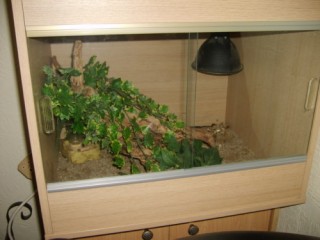
The enclosure a reptile is kept is called a vivarium. Vivariums come in many shapes, sizes and designs.
Obviously you should choose an enclosure that is best suited to the particular species of reptile that you intend to keep. This is beyond the scope of this page so these are just rough guides to get you started choosing the best environment.
When it comes to choosing a vivarium there a few general rules that apply in most cases.
The bigger the vivarium the better it is for your pet. You may well find that in a few months your reptile has outgrown his enclosure and you will then have the expense of providing him with a bigger vivarium. The larger the enclosure the easier it is to provide ideal temperatures and temperature gradients. Also the larger size will enable you to create suitable hiding places and more decoration, which will lead to a happier pet.
The vivarium must be secure. Reptiles and snakes in particular are notorious escape artists and if you do not take precautions they will find a way of getting out.
Vivariums must have adequate ventilation and also provide easy access to both your pet and for cleaning purposes.
Types Of Vivarium
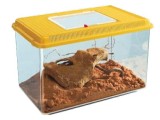
Plastic Tank
This is the cheapest tank and is often used to house insects and spiders.They have the advantage of being light and can be stacked together for storage when not used but they have a few drawbacks.
Plastic tanks can be used to house small reptiles such as hatchlings, but they are not really designed to be used with a light source. Also due to their small size maintaining manageable temperatures and a thermal gradient is not very easy.
They do have their uses as temporary enclosures in an emergency such as a broken vivarium or the sudden appearance of offspring.
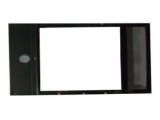
Vivarium Hood
The vivarium hood is a piece of equipment which converts an aquarium into a vivarium. It is basically a cover that has a built in light fitting and access to the tank.They suffer from a few disadvantages. Vivarium hoods can be quite expensive which may detract from the idea of reusing a free or inexpensive aquarium. It is also difficult to secure the lid to stop the escape of your pet especially snakes. Access to the tank is often via a sliding glass panel which runs the risk of being broken.
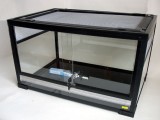
Glass And Mesh Vivarium
The glass and mesh vivarium is the newest arrival on the vivarium scene and is now widely available.They can be quite expensive. They are generally very secure with a mounting for a padlock on the doors. They also do not suffer from the problems of water and humidity which can affect wooden vivariums. Glass and mesh vivariums allow good viewing of your animals and have ample ventilation. They do however suffer from heat loss due to being made of glass.
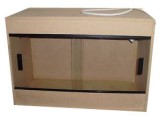
Wooden Vivarium
The wooden vivarium has been the most popular choice of vivarium for many years.They come in a huge variety of shapes and also different colors so they fit in with your household furnishings.
The wooden vivarium may come flat packed, which means a fairly simple assembly job. They may also not come with appropriate light fittings which you means that you will have to install these yourself.
The wooden vivarium is ideal for attaching equipment either by screws or via drilling small holes. It also is better at retaining heat than predominantly glass enclosures.
The main disadvantage is that the majority are made of wood composite that makes the vivariums lighter but overtime can be damaged by water and humidity. Solid wooden vivariums do not suffer from these problems, but they tend to be very heavy.